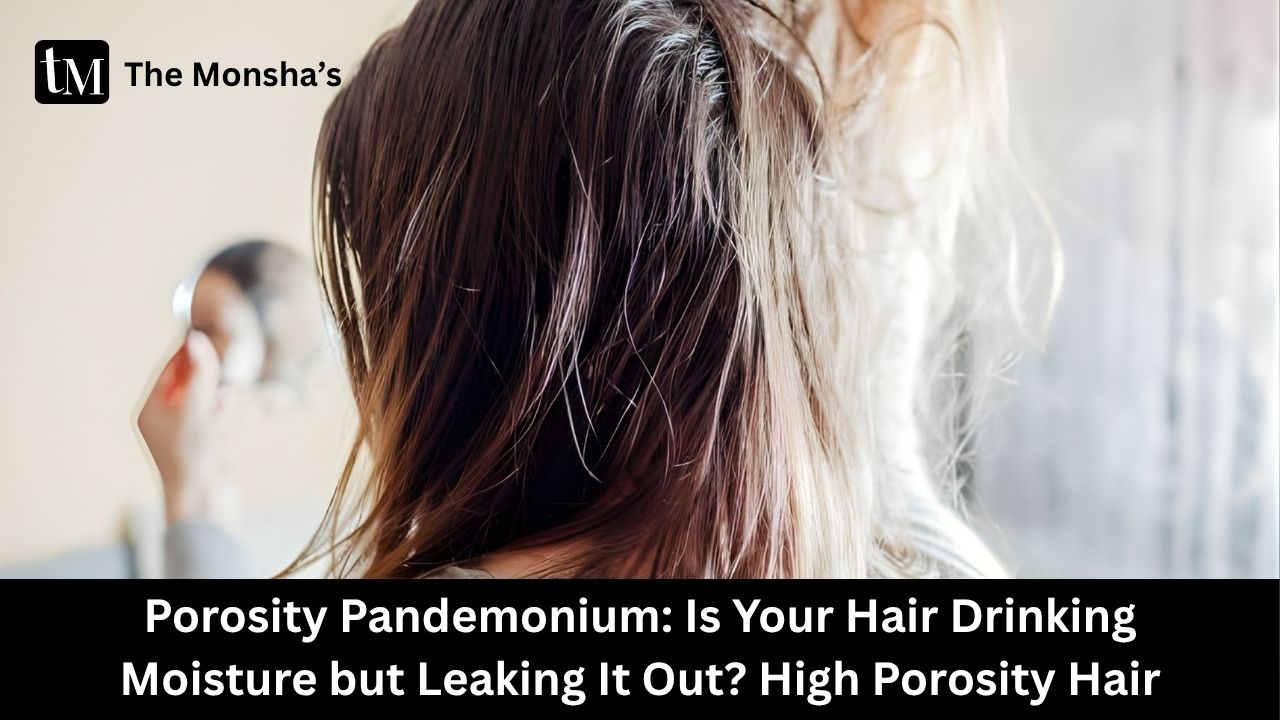
"Baalon ka kya karein yaar… pani mein doob ke bhi sukhe reh jaate hai – jaise monsoon ke baad ka nadi ka haal." 😅If your hair gulps down oils and creams like a thirsty camel and yet still feels dry, frizzy, and rough – congratulations, you may have high porosity hair. This is the secret villain behind your moisture drama, frizz, and endless “bad hair day” reels.
I’ve been there – slathering oils, masks, and fancy serums only for my hair to puff up like a neglected loofah. Let’s decode what’s actually happening and how to fix it without burning your wallet.
Hair porosity is basically how easily your strands let moisture in and how well they hold it. Low porosity = closed cuticles (moisture struggles to get in). High porosity = open or damaged cuticles (moisture rushes in but leaks right back out).
High porosity can be genetic but is often a result of repeated blow-drying, straightening, coloring, bleaching, or even harsh UV exposure. According to dermatology and trichology findings, high porosity hair has lifted or missing cuticle layers, which creates gaps – think of a sponge with holes.
If you tick three or more of these boxes, there’s a good chance your hair’s porosity is high.

Tip: Different sections of your hair may have different porosities – don’t panic if you’re “mixed porosity.”
Think of it like a leaky bucket. You pour water (or oil, serum, conditioner) in and it all runs out. Your hair might look fine after application but an hour later it’s dry again. This constant moisture loss leads to frizz, tangles, and breakage – and frustration.
Scientific studies on hair fiber structure show that cuticle damage reduces the ability of hair to retain internal moisture and lipids, making it weaker and more vulnerable to environmental stressors.
Moisture masks, leave-ins, and creams add hydration; sealing oils (like castor, avocado, shea butter) lock it in. Follow LOC (Liquid-Oil-Cream) or LCO (Liquid-Cream-Oil) methods depending on your texture.
Hydrolyzed proteins, keratin, silk amino acids help fill in the cuticle gaps and strengthen strands. Too much protein though = stiff hair. Alternate with moisturizing masks.
Use sulphate-free shampoos, avoid harsh alcohols, and keep water lukewarm.
Apple cider vinegar (diluted) or aloe-based rinses can help “flatten” cuticles, improving shine and retention.
Always use a heat protectant before blow-drying or straightening. Try silk scarves, bonnets, or low-tension braids to reduce friction at night.

Apply on damp hair, leave for 15–20 minutes, rinse, then seal with oil or butter. Always patch test if using new ingredients.

If it’s caused by damage, you can improve it with consistent care and trims, but some porosity change is permanent.
Every 2–4 weeks depending on your hair’s response. Over-proteinizing makes hair brittle.
No. Oils seal moisture; they don’t add it. Always hydrate first.
You can, but prep with protein/moisture masks and always use bond-protecting treatments.
You may not be sealing after moisturizing, or the cuticle damage is too extensive for one treatment.
High porosity hair isn’t the end of your hair story — it’s just a chapter you need to read differently. Once you understand that your hair drinks fast but leaks faster, you can tweak your routine to hydrate, seal, and protect.
If DIY feels overwhelming, book an at-home deep moisture + sealing hair spa from The Monsha’s — our experts come with products, steamers, and desi tricks to revive even the thirstiest strands. 🌿💆♀️